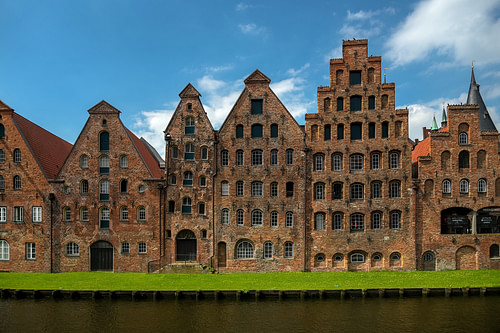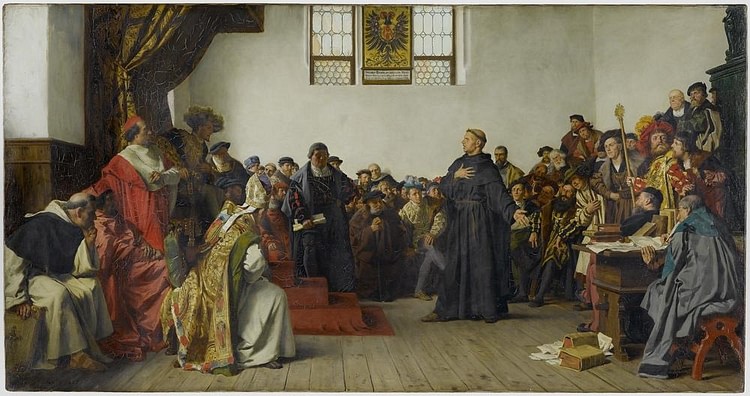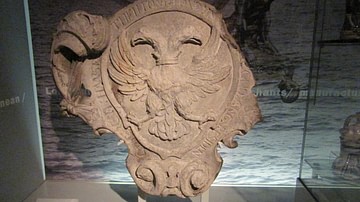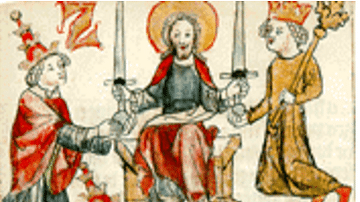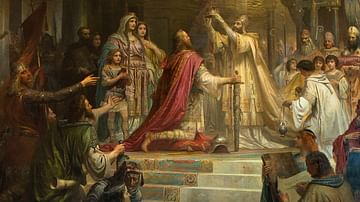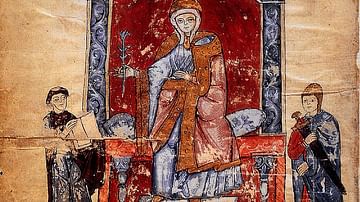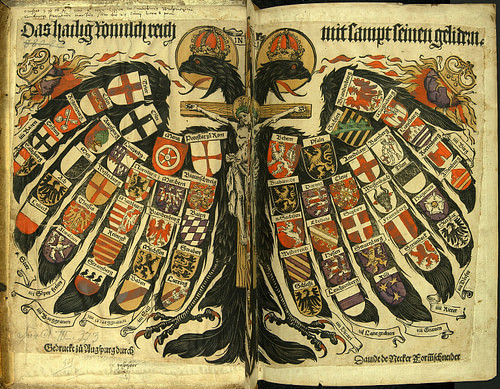
The Holy Roman Empire officially lasted from 962 to 1806. It was one of Europe’s largest medieval and early modern states, but its power base was unstable and continually shifting. The Holy Roman Empire was not a unitary state, but a confederation of small and medium-sized political entities.
When they managed to speak with one voice, the Holy Roman Emperor was one of Europe’s mightiest sovereigns. More often than not, though, the “member states” of the Holy Roman Empire had divergent interests and came into conflict with one another. Other European powers regularly and ruthlessly exploited these divisions. Consequently, weak emperors were almost completely ignored by the heads of the Holy Roman Empire’s lesser states. Strong emperors, on the other hand, fared better at subjugating them to their will, but always had to fight tooth and nail to project and protect their power.
To make matters worse for the imperial house, the Holy Roman Emperor was elected by an Imperial College. Every new election carried with it the risk of losing the imperial crown to another ambitious family. To prevent this, the ruling dynasty usually had to offer concessions to members of the college to woo their votes. Over time, this hollowed out the imperial family’s power so that - sooner or later - they would enter an election with not much left to offer. These were often the moments when the imperial dynasty was replaced with a new one, only to start the cycle anew.
Therefore, despite its impressive size, the Holy Roman Empire only turned into an imperial juggernaut under the strongest of emperors. The weaker ones were on the receiving end of the political machinery of this confederal elective monarchy, de facto ruling over not much more than their family’s hereditary lands.
Foundation
During the 8th and 9th centuries, the Franks carved out a humongous realm in Central and Western Europe. On Christmas Day, 800, the Frankish king, Charlemagne, had himself crowned as emperor in Rome. Under his grandsons, however, the Frankish realm swiftly disintegrated. They agreed to split the empire into three parts: the Kingdom of West Francia (the precursor of medieval France), Middle Francia or Lotharingia, and East Francia. The third kingdom evolved into the Kingdom of Germany during the late 9th and early 10th centuries.
Since, in theory, you can only have one emperor at the same time, Charlemagne’s grandsons decided that the ruler of Middle Francia was to carry the imperial title. This agreement broke down quickly because that family line of the Carolingian Dynasty went extinct. As a result, Middle Francia descended into chaos, breaking apart into the Kingdom of Burgundy and the Kingdom of Italy. In the 10th century, the Italian princess Adelaide (931-999) asked Otto I, King of Germany (r. 936-973) and Holy Roman Emperor (r. 962-973), to come and settle affairs south of the Alps. Otto invaded northern Italy, installed order, married Adelaide, and continued to Rome.
Otto was now King of Germany and, through Adelaide’s family line, King of Italy. In his mind, this called for an imperial title. Fortunately for him, the pope was grateful for the reintroduction of some sense of stability in Italy by the German forces. So he thanked Otto by reviving the vacant imperial title and crowned him emperor. The ‘office’ of the Holy Roman Emperor was hereby formally transferred from Middle Francia to East Francia/Kingdom of Germany, where it would remain for the rest of the Holy Roman Empire’s history. That is why this event, in 962, is usually seen as the start of the Holy Roman Empire. Some historians regard the crowning of Charlemagne, in 800, as the beginning but his empire is now generally referred to as the Frankish or Carolingian Empire.
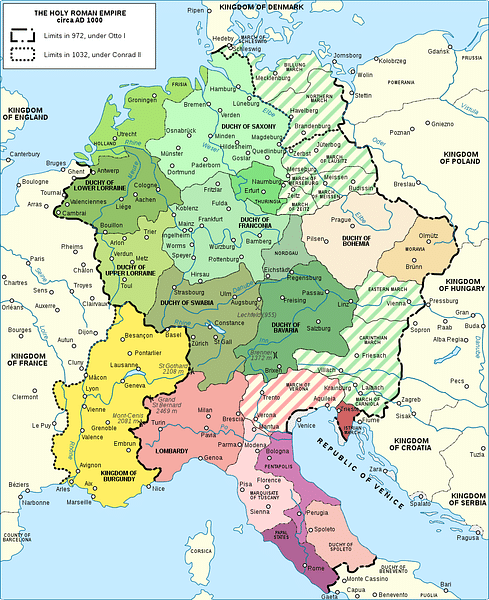
Otto’s family, the Ottonian Dynasty or Saxon Dynasty, ruled the empire until 1024 CE. They incorporated the Duchy of Bohemia into the empire. Soon after, the Ottonians were replaced by the Salian Dynasty. The Salians added the other, leftover part of Middle Francia, the Kingdom of Burgundy, to the Holy Roman Empire. They thus turned the empire into a composite monarchy with the major building blocks being Germany, Italy, Bohemia, and Burgundy. Meanwhile, the ascendant Salians entered into a major conflict with the medieval church, known as the Investiture Controversy. The growing imperial power in the 11th century raised the question of who reigned supreme in Latin Christianity: the pope or the emperor? After much debate and bloodshed, a compromise was reached; the Concordat of Worms in 1122 limited the religious influence of the emperor. The Holy Roman Empire’s next dynasty, the Staufers, nevertheless pushed imperial power in secular matters to its very limit.
The Staufer Dynasty
The Staufer dynasty was one of the Holy Roman Empire’s most remarkable imperial houses. Under their reign, the Empire reached its greatest territorial extent. At their height of power in the 13th century, the Staufers ruled - in theory - from the southern border of Denmark to the Mediterranean island of Sicily.
The first Staufer emperor, Frederick I (r. 1155-1190), was called Barbarossa, on account of his red beard. He participated in the Second Crusade before he became emperor and accrued a wealth of military experience at a young age. After his imperial coronation, he was challenged again and again by the flourishing mercantile republics in his own Kingdom of Italy. He led over six military expeditions against his Italian subjects. Ultimately, he made so many enemies that several cities allied against him with the pope, Sicily, and even the Byzantine Empire. Barbarossa was beaten and returned north a bitter man. Determined for revenge, he prepared another expedition but was overtaken by events in the Levant. The armies of the Saladin, the Muslim Sultan of Egypt and Syrian r. 1174-1193) had conquered Jerusalem. Barbarossa joined the Third Crusade, intending to reconquer the Holy City. Having progressed quite far on the way to his target, he took a fateful bath in a river in current-day Turkey and drowned.
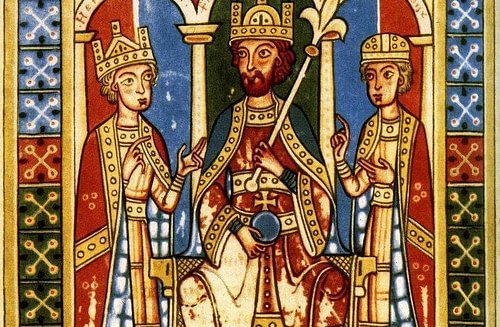
His grandson, Frederick II (r. 1220-1250) made such an impression on his contemporaries that they called him stupor mundi, meaning “wonder of the world”. He spoke six languages and promoted poetry, philosophy, and medieval literature, also welcoming Muslim and Jewish scholars at his court in Palermo, Sicily. His religious tolerance, combined with his limitless territorial ambitions, brought him into a near-permanent state of conflict with the pope. Frederick was excommunicated three times over and Pope Innocent IV even called him “the Antichrist”. Nevertheless, Frederick saw himself as a paragon of Christianity and sailed to the Holy Land with the Sixth Crusade. Contrary to the aggressiveness which was - by now - characteristic for armies of the crusades, the emperor negotiated with the sultan, al-Kamil (r. 1218-1238), and regained control of Jerusalem. Where the Third Crusade had failed militarily, the Sixth succeeded with diplomacy.
The centrifugal issues that plagued the Holy Roman Empire were temporarily subdued by Frederick’s overbearing might. But when he died and the Staufer era came to an end in 1250, these challenges came to the fore with increased intensity. The Italian republics as well as the northern cities united in the Hanseatic League jumped into the power vacuum that Frederick’s death created and enlarged their political and economic autonomy. Inland, feudal lords squabbled over the imperial succession but none managed to subjugate the others. A new emperor was only crowned in 1312 - over 60 years after the end of the Staufer Dynasty. This period is known as the Interregnum, meaning “between reigns”.
Culture & Economy
As central authority decreased after the Staufer emperors, a decentralization process kicked in that transferred power from the ancient feudal aristocracy to the late medieval and early modern burgher class, who populated the cities. Because money was reinjected into the economic system, the possession of land was gradually overshadowed by having a big, fat purse. This shift in power did not mean that the empire became democratic in any way. The Imperial College, whose members elected the emperor, still consisted exclusively of feudal lords. Its ecclesiastical members were the archbishops of Mainz, Trier, and Cologne. The secular electors were the dukes of the four "nations" of Germany: Franconia, Swabia, Saxony, and Bavaria. After the Staufer dynasty, Franconia, Swabia, and Bavaria were replaced by the King of Bohemia, the Count Palatine, and the Margrave of Brandenburg. These and other aristocrats continued to wield great power during the late medieval phase of the Holy Roman Empire, but as cities accumulated more wealth, burghers managed to press for ever-increasing concessions from their feudal overlords, gradually paving the way for an early modern, urbanized society.
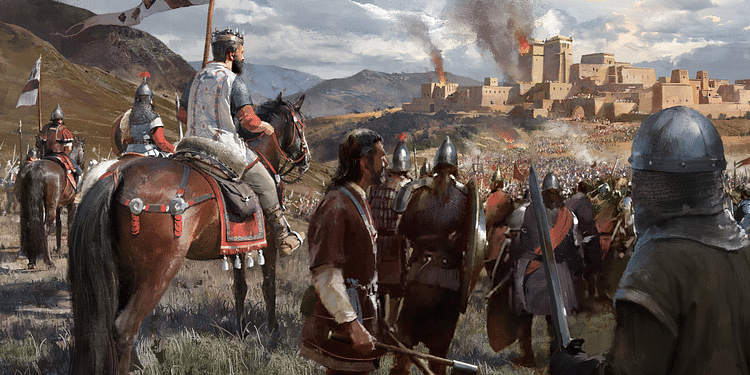
It was because of this shift from feudalism to a mercantile business economy that Italy started breaking away from the Holy Roman Empire. The maritime republics of Venice, Genoa, and Pisa had built up a significant amount of autonomy under the Staufer emperors. As central imperial authority over Italy faded, they accelerated this process - eventually setting them on a trajectory towards the Renaissance, when Florence and Milan followed their example. During the post-Staufer period, in addition to their distinct political and economic position, they distanced themselves mentally and culturally from the other, northern inhabitants of the empire and started referring to them as “Teutons” or “Germans”.
Meanwhile, in the lands north of the Alps, cities negotiated with dukes and counts for greater economic freedom as well. The outcome of these political confrontations was written down in documents called "privileges", usually highly favorable to the city in question. The burgher class put more and more feudal lords on the defensive. Inside the cities, craftsmen started to organize themselves into medieval guilds. These associations soon became political bodies of their own. They controlled the local labor market, the amount of production, and trade tariffs. Furthermore, the most prosperous cities allied in leagues and could extract even more concessions and privileges from the feudal aristocracy. The Lombard League, an alliance of North Italian cities, had been a thorn in Barbarossa’s side, and in the north, the commercial centers along the North Sea and Baltic coasts, such as Hamburg, Bremen, and Danzig, joined forces by forming the Hanseatic League. Already in the 12th century, this union of cities managed to force the English king to exempt its members from all tolls in London.
Evidently, the Holy Roman Empire did not need a strong emperor to flourish. Although imperial authority waned during the Late Middle Ages, cities, guilds, and burghers cooperated to improve their position. In the meantime, the imperial title passed through the Luxembourgish, Bavarian, and Bohemian dynasties to land in the lap of the Austrian Habsburgs in the 15th century. From 1415 CE, this family reigned over the Holy Roman Empire until its final day.
The Reformation
It was under Habsburg rule that the Holy Roman Empire experienced an era of great religious strife, making it one of its darker periods. Whereas the imperial family was staunchly Catholic, in the north of the empire the Protestant Reformation exploded in 1517 when Martin Luther officially broke with the pope and fractured Western Christianity. A large number of cities leaped at this chance to resist the Catholic Habsburgs. They exploited this tectonic shift in church matters and sided with the Reformation, giving it an immediate and inflammable political dimension. The Rhineland, Bohemia, Austria, and the south of the German territories remained mostly Catholic, while the north and cities such as Strasbourg and Frankfurt became bulwarks of Protestantism.
In the meantime, the beleaguered Charles V, Holy Roman Emperor (r. 1519-1556) was also battling the French and the Turks, who had by now replaced the Byzantines in the Balkan and were threatening Hungary - a Habsburg possession, though formally outside the Holy Roman Empire. Although he tried to juggle all these affairs, in 1555 an exhausted Charles V gave in to Protestant demands and resigned soon thereafter. From that moment, the lord of a "member state", such as the Duke of Saxony or the King of Bohemia, could decide whether his lands were Catholic or Protestant. It was agreed that the emperor would stay out of religious matters outside his own lands. This gave the Holy Roman Empire a somewhat uneasy but rather stable base to work with for the rest of the 16th century. However, this decline of imperial power once again created a power vacuum that led to open conflict.
As Protestantism was still expanding, the Kingdom of Bohemia slowly yet steadily converted to the new creed. The kingdom was under Habsburg rule at the time: next to being emperor, the Habsburgs were also simultaneously kings of Bohemia. In 1618, the Bohemian nobility revolted and deposed Ferdinand II as king of Bohemia (though not as emperor). They offered the crown to a Protestant candidate. Embarrassed as well as offended, Ferdinand II, Holy Roman Emperor (r. 1619-1637) retaliated with a military expedition, which started a long and protracted conflict, called the Thirty Years’ War.
Initially, the imperial party regained control of Bohemia soon enough. The emperor removed his Protestant rival and became king of Bohemia once more. However, because of the agreement that Charles V had signed in 1555, the emperor was supposed to concentrate on his own hereditary lands and leave other territories unmolested. In the heated religious atmosphere of the 17th century, the imperial meddling in Bohemian (Protestant) affairs was interpreted as the Habsburgs overstepping their authority. As a result, the duke of Holstein - simultaneously the king of Denmark - rebelled and campaigned against his emperor for a couple of years. Ultimately, he was beaten, the growing Habsburg influence scared others. So, after the Danish phase, it was Sweden’s turn to try and strengthen the Protestant cause in northern Germany. The Swedish king warred against the emperor for many years and scored great victories but was slain in battle in 1632.
Because all else had failed, the French - always jealously trying to obstruct Habsburg ambitions - now had no choice but to directly intervene in the conflict as well. Most of the fighting took place on German lands, and the decades of intermittent fighting devastated the country, weakening the imperial position as the conflict dragged on. The combination of internal resistance by Protestant princes and interventions by Danish, Swedish, and French forces ultimately proved to be too much to handle for the Habsburgs. In 1648, after a long period of negotiations, a comprehensive peace package was agreed upon. This Peace of Westphalia finally ended the calamitous conflict, one of the most lethal, ruinous and catastrophic confrontations in European history. At last, peace - both in a religious and secular sense - returned to the Holy Roman Empire.
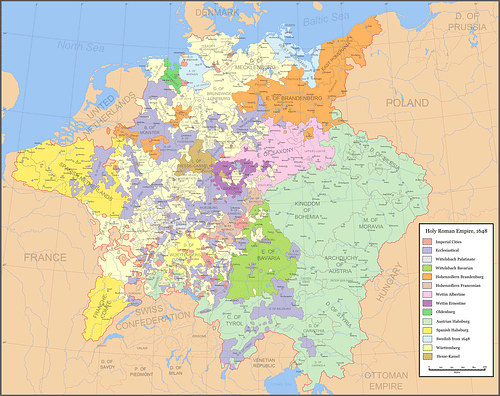
Decline
After the Treaty of Westphalia, the Habsburgs remained in place as Holy Roman Emperors, but their power was increasingly confined to their own Austrian, Bohemian, and Hungarian possessions. At Vienna, they thwarted a major Ottoman assault on Central Europe with Polish assistance in 1683, and it was with this power base that they kept trying to obstruct the rise of France as a European great power. The Holy Roman Emperors definitively failed at this task when Louis XIV of France (r. 1643-1715) managed to extend his eastern borders to the Rhine river. As threatening as the French might have seemed, the next great challenge to Habsburg authority did not come from Paris, but was - once again - growing inside the Holy Roman Empire.
During these years, the Hohenzollern family ruling the Margraviate of Brandenburg expanded this state into the Kingdom of Prussia. Although this happened mostly with the grudging approval of the emperors, in 1740, the Prussian king launched a swift invasion of Silesia, one of the wealthiest and most productive Habsburg lands. A Habsburg counter-offensive was not altogether unsuccessful, but in the end the emperor had to cede this province to Prussian control. The conflict between Austria and Prussia would continue for a long time afterward and played a major role in the first German national unification in the 19th century CE. However, before that came to pass, the Holy Roman Empire was no more.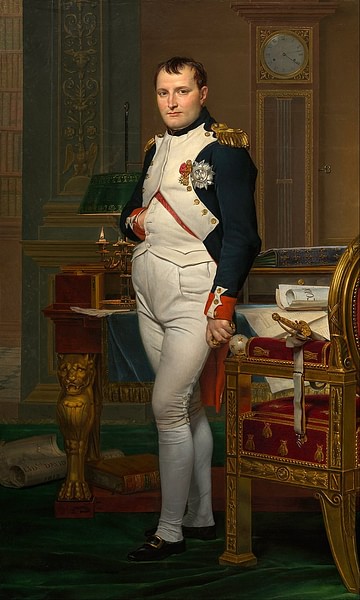
Around 1800, the eternal threat from the west, the French, took on a whole new shape. First in the form of revolutionary armies, later in the persona of Napoleon Bonaparte (l. 1769-1821), France marched east with unprecedented success. In 1805, Napoleon inflicted such a crushing defeat on the Holy Roman Emperor that his authority outside his own Habsburg lands ceased to exist. The next year, the Holy Roman Empire was officially dissolved, while the French reorganized most German states into their satellite state called the Confederation of the Rhine. After Napoleon was beaten for good, the confederation idea remained in place. All German states, including Prussia and Austria, joined the new German Confederation. From this alliance of member states modern Germany finally emerged, although Austria and the Habsburgs were ultimately excluded from this project by the continuing expansion of Prussia. In Vienna, the Habsburg family clung to power as Emperors of Austria-Hungary and ruled until the events of the First World War (1914-1918) made this imperial title obsolete as well.
